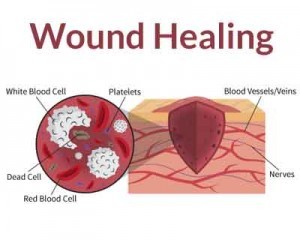- Home
- Editorial
- News
- Practice Guidelines
- Anesthesiology Guidelines
- Cancer Guidelines
- Cardiac Sciences Guidelines
- Critical Care Guidelines
- Dentistry Guidelines
- Dermatology Guidelines
- Diabetes and Endo Guidelines
- Diagnostics Guidelines
- ENT Guidelines
- Featured Practice Guidelines
- Gastroenterology Guidelines
- Geriatrics Guidelines
- Medicine Guidelines
- Nephrology Guidelines
- Neurosciences Guidelines
- Obs and Gynae Guidelines
- Ophthalmology Guidelines
- Orthopaedics Guidelines
- Paediatrics Guidelines
- Psychiatry Guidelines
- Pulmonology Guidelines
- Radiology Guidelines
- Surgery Guidelines
- Urology Guidelines
Lasers can help monitor burn wound healing

Burn injuries are a major public health issue and management of these a key concern. Regular assessment of healing tissues is necessary but biopsies are painful and may hinder the healing process. A group of Indian scientists has come up with a solution for easier assessment of healing progression using laser light.
Scientists at Manipal University in Karnataka have demonstrated the ability of laser-induced fluorescence (LIF) technique to quantify the amount of collagen in healing tissues and thus analyze the recovery process. The more the collagen content, the healthier the tissue.
The strategy is to study biochemical changes by exploiting tissue fluorophores - chemical compounds that can re-emit light. Some of the most common fluorophores are collagen, elastin, amino acids (building blocks of proteins) like tryptophan, phenylalanine and tyrosine that are responsible for tissue autofluorescence.
Researchers hit injured areas with a laser light of a particular wavelength and captured the emitted light in the range, generating a spectrum. For each region, multiple spectra are generated and averaged. This yields an image that correlates with collagen content reflective of the healthy repair. Based on this knowledge, scientists have proposed a simple technique to evaluate the progression of healing using a non-invasive, fast and an easy to use the tool.
“With LIF we evaluated collagen synthesis and the healing process in vivo without sacrificing the animal. The evaluation using this technique takes only 15-20 seconds and is a biopsy free or non-invasive approach,” explains Prof. Krishna K Mahato, who led the research team.
The preliminary studies on monitoring effectiveness of low power laser therapy (LPLT) in mice with burn wounds showed encouraging results. “LIF is sensitive and since it is an objective assessment, it doesn’t demand experienced operators and thus is user-friendly”, suggest researchers.
“We have promising results in tissue samples from burn patients and with further analyses and studies, we hope to have this tool routinely used for patients in near future,” Prof. Mahato told India Science Wire.
The research team included Bharath Rathnakar, Bola Sadashiva Satish Rao, Vijendra Prabhu, Subhash Chandra and Krishna Kishore Mahato. The results have published in journal Lasers in Medical Science. (The study has been first published in India Science Wire)

Disclaimer: This site is primarily intended for healthcare professionals. Any content/information on this website does not replace the advice of medical and/or health professionals and should not be construed as medical/diagnostic advice/endorsement or prescription. Use of this site is subject to our terms of use, privacy policy, advertisement policy. © 2020 Minerva Medical Treatment Pvt Ltd